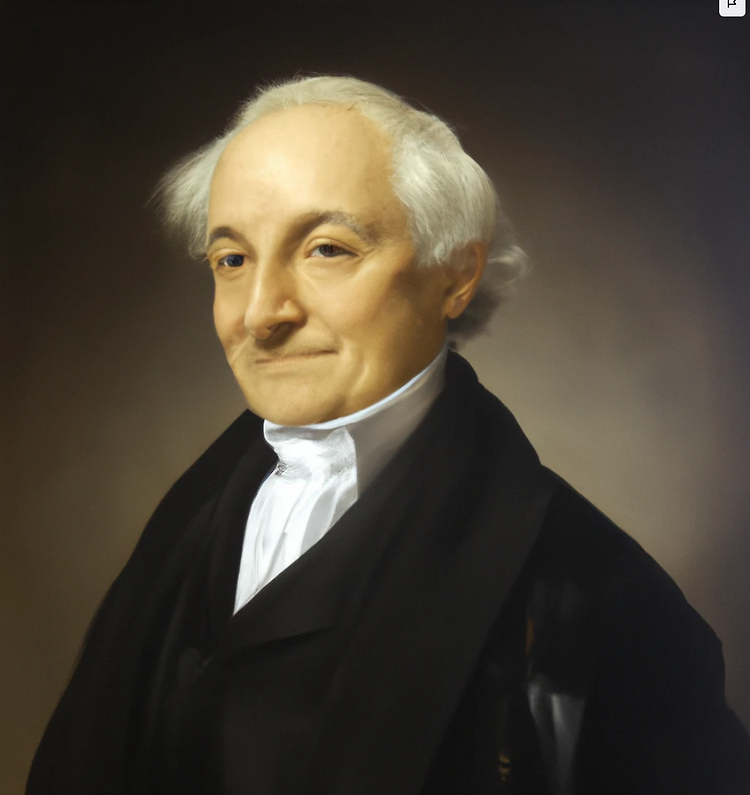

Biography
Carl Friedrich Gauss was a German mathematician and physicist who is widely considered to be one of the most influential mathematicians of all time. He was born on April 30, 1777 in Brunswick, Germany, and as a child, he showed an early talent for mathematics. He quickly surpassed his teachers, and by the age of 21, he had already made significant contributions to number theory and statistics.
Gauss studied at the Collegium Carolinum in Brunswick and later at the University of Göttingen. He was appointed as a professor at the University of Göttingen in 1807 and held this position for the rest of his life. He made many important contributions to mathematics, physics, and astronomy throughout his career, and he is considered to be one of the greatest mathematicians of all time.
Gauss had a difficult personal life, he lost his first wife and a child, and had a strained relationship with his second wife. He died on February 23, 1855 in Göttingen, Germany.
Career and Achievements
Gauss's contributions to mathematics were many and varied, but some of his most notable accomplishments include:
- His work on the theory of numbers, including the development of the method of least squares and the discovery of the constructibility of the regular 17-gon using a ruler and compass.
- His development of the Gaussian distribution, which is a probability distribution that is widely used in statistics and other fields.
- His work on the theory of functions of complex variables, which laid the foundation for the field of complex analysis.
- His contributions to the field of astronomy, including the calculation of the orbit of Ceres, which was the first asteroid to be discovered.
Gauss also made important contributions to the field of physics, including the development of the concept of the magnetic potential. He also worked on the development of the telegraph and the construction of the first electric telegraph line.
Gauss was honored with many awards and honors throughout his career, including being awarded the Copley Medal by the Royal Society in 1838. He was also elected a member of the Royal Society of London, the Berlin Academy of Sciences, and many other scientific societies throughout Europe.
Definitions, Theorems, and Properties
- Gaussian Distribution: Also known as normal distribution, it is a probability distribution that describes data that clusters around a central value. It is characterized by its bell-shaped curve and is defined by the equation $f(x) = \frac{1}{\sigma \sqrt{2\pi}}e^{-\frac{(x-\mu)^2}{2\sigma^2}}$, where $\mu$ is the mean and $\sigma$ is the standard deviation.
- Gaussian Function: Also known as the heat equation, it describes the diffusion of heat through a material over time. The function is defined by the equation $f(x) = e^{-x^2}$.
- Gaussian Elimination: A method for solving systems of linear equations using matrix algebra. It involves using elementary row operations to transform the matrix into an upper triangular matrix.
- Gaussian Integers: A set of complex numbers of the form $a+bi$, where $a$ and $b$ are integers. Gaussian integers form a unique ring, known as Gaussian integers ring.
- Gauss-Bonnet Theorem: A theorem in differential geometry that relates the curvature of a surface to its topology. The theorem states that the integral of the Gaussian curvature over the surface is equal to $2π$ times the Euler characteristic of the surface.
- Gaussian Curvature: A measure of the deviation of a surface from being flat. It is defined as the product of the principal curvatures at a point on the surface.
- Gaussian Map: A map from a surface to a plane that assigns to each point on the surface the direction of the normal vector. It is a local isometry and preserves angles between tangent vectors.
- Gaussian Primes: A subset of Gaussian integers, it is a Gaussian integer that is a prime number in the ring of Gaussian integers.
- Gaussian Quadrature: A method for approximating definite integrals using a finite number of points and weights. It is based on the Gaussian distribution and is widely used in numerical analysis.
Gaussian Distribution
The Gaussian distribution, also known as the normal distribution, is a continuous probability distribution that is defined by the following probability density function:
$f(x) = \frac{1}{\sqrt{2\pi\sigma^2}}e^{-\frac{(x-\mu)^2}{2\sigma^2}}$
where $\mu$ is the mean of the distribution and $\sigma^2$ is the variance. The Gaussian distribution is a symmetric distribution with a bell-shaped curve and is commonly used in statistics and signal processing.
Gaussian Elimination
The Gaussian elimination method is a numerical method for solving systems of linear equations. The method involves manipulating the matrix of coefficients to transform it into an upper-triangular matrix. This can be done by applying a sequence of row operations, such as swapping rows, multiplying rows by a constant, and adding a multiple of one row to another. Once the matrix is in upper-triangular form, the system can be easily solved using back substitution. Gaussian elimination is widely used in numerical linear algebra and engineering.
Gaussian Integers
The Gaussian integers are a subset of complex numbers of the form $a + bi$ where $a$ and $b$ are integers and $i$ is the imaginary unit. They form a ring under the usual operations of addition and multiplication of complex numbers. Gaussian integers are important in number theory and have been studied for their unique algebraic properties.
Gaussian Curvature
The Gaussian curvature, also known as the Gaussian-Kronecker curvature, is a measure of the deviation of a surface from being flat. It is defined as the product of the principal curvatures at a point on the surface. The Gaussian curvature can be positive, negative, or zero, and it is a local property of the surface. Positive Gaussian curvature corresponds to a surface that is locally convex, negative Gaussian curvature corresponds to a surface that is locally saddle-shaped, and zero Gaussian curvature corresponds to a surface that is locally flat.
Gaussian Map
The Gaussian map is a map from a surface to a plane that assigns to each point on the surface the direction of the normal vector. It is a local isometry and preserves angles between tangent vectors. The Gaussian map is a powerful tool in differential geometry and is used to study the properties of surfaces.
Gaussian Primes
The Gaussian primes are a subset of Gaussian integers that are prime numbers in the ring of Gaussian integers. They are an important topic in number theory and have unique algebraic properties.
Gaussian Quadrature
Gaussian quadrature is a method for approximating definite integrals using a finite number of points and weights. It is based on the Gaussian distribution and is widely used in numerical analysis. The method involves choosing a set of points, called the quadrature points, and a set of weights such that the integral can be approximated as a weighted sum of function evaluations at the quadrature points. Gaussian quadrature is a powerful and efficient method for numerical integration and is widely used in many fields.
In addition to the above definitions, Theorems, and properties, Gauss also made significant contributions to other areas such as astronomy, statistics, and number theory. For example, he made important contributions to the study of complex functions, including the development of the theory of complex analysis. His work on the theory of numbers was also pioneering, and his results on the construction of regular polygons and the computation of the class number in quadratic fields were particularly noteworthy. In addition, Gauss made important contributions to the field of astronomy, including the development of the method of least squares and the calculation of the orbit of Ceres, which was the first asteroid to be discovered.
Appraisal
Gauss is considered to be one of the greatest mathematicians of all time and has been referred to as the "Prince of Mathematicians" and the "greatest mathematician since antiquity". His contributions to mathematics and science were vast and varied and his work continues to be studied and applied to this day. He is also credited with introducing the concept of rigorous proof into mathematics and his work laid the foundation for many branches of mathematics and physics.
Anecdotes
- As a child, Gauss was discovered to have a remarkable ability to perform calculations in his head. This led to a legendary story where his primary school teacher gave his class the task of adding the numbers from 1 to 100. While the other students struggled with the task, Gauss quickly came up with the correct answer of 5050.
- Gauss was known for being a solitary figure, who preferred to work alone and kept his ideas and discoveries to himself. This led to many of his results being published posthumously.
- Gauss was a perfectionist and often spent years working on a single problem, polishing his results until they were as elegant and rigorous as possible.
Conclusion
Carl Friedrich Gauss was a German mathematician and physicist who made significant contributions to many fields, including number theory, statistics, complex analysis, and astronomy. He is widely considered to be one of the greatest mathematicians of all time and his work continues to be studied and applied today. His contributions include the development of the Gaussian distribution, the Gaussian elimination method, and the Gaussian integers. He also introduced the concept of rigorous proof into mathematics and his work laid the foundation for many branches of mathematics and physics. Gauss's life was marked by the personal difficulties, but his mathematical discoveries and contributions are still an inspiration for all mathematicians.

You know what's cooler than magic? Math.
포스팅이 좋았다면 "좋아요❤️" 또는 "구독👍🏻" 해주세요!



